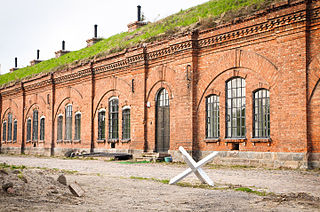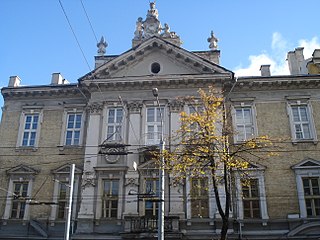 W
WThe House of the Signatories is a Lithuanian historic landmark on Pilies Street, Vilnius, where on February 16, 1918, the Act of Independence of Lithuania was signed by twenty members of the Council of Lithuania.
 W
WMacikai POW and GULAG Camps - the Macikai (Matzicken) complex of a Nazi German prisoner-of-war camp (1939-1944), Soviet prisoner-of-war camp No. 184 (1945-1948) and Soviet GULAG forced-labour camps (1945-1955), that existed in Village Macikai, 2 kilometres away from Heydekrug, Memelland.
 W
WThe Museum of Occupations and Freedom Fights, previously the Museum of Genocide Victims, in Vilnius, Lithuania was established in 1992 by order of the Minister of Culture and Education and the President of the Lithuanian Union of Political Prisoners and Deportees. In 1997 it was transferred to the Genocide and Resistance Research Centre of Lithuania. The museum is located in the former KGB headquarters across from the Lukiškės Square; therefore, it is informally referred to as the KGB Museum.
 W
WThe Ninth Fort is a stronghold in the northern part of Šilainiai elderate, Kaunas, Lithuania. It is a part of the Kaunas Fortress, which was constructed in the late 19th century. During the occupation of Kaunas and the rest of Lithuania by the Soviet Union, the fort was used as a prison and way-station for prisoners being transported to labour camps. After the occupation of Lithuania by Nazi Germany, the fort was used as a place of execution for Jews, captured Soviets, and others.
 W
WThe Samogitian Diocese Museum is a museum dedicated to the former Diocese of Samogitia. Established in 1999, the museum is located in the building of the former Varniai Priest Seminary which was relocated to Kaunas after the failed Uprising of 1863. The museum is a branch of the Samogitian Museum Alka based in Telšiai.
 W
WThe Seventh Fort or VII Fort is a defensive fortification built in Žaliakalnis district of Kaunas, Lithuania, during implementation of the first phase of the construction of the Kaunas Fortress. It is located near the Hospital of Lithuanian University of Health Sciences. This Fort became the last brick fortification of Kaunas Fortress. The Seventh Fort is close to the central defenses and it is located in the rear of Kaunas Fortress. The first owner of fort was the 11th company of Kaunas Fortress Artillery. In 1915, German Army occupied the Fort without resistance. The Seventh Fort is one of the best surviving examples of a two-rampart fort, showing the typical design of a 19th-century Russian brick fort. Many authentic elements survive, such as iron window frames, ammunition warehouse gate fragments. During the Fort's restoration, a number of authentic interior details were found.
 W
WVilna Gaon Jewish State Museum is a Lithuanian museum dedicated to the historical and cultural heritage of Lithuanian Jewry.
 W
WThe Vilnius Castle Complex is a group of cultural, and historic structures on the left bank of the Neris River, near its confluence with the Vilnia River, in Vilnius, Lithuania. The buildings, which evolved between the 10th and 18th centuries, were one of Lithuania's major defensive structures.
 W
WThe Vytautas the Great War Museum is a museum in Kaunas, Lithuania. It was built in Art Deco and early functionalism style.